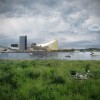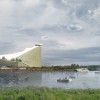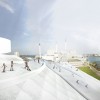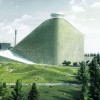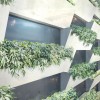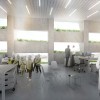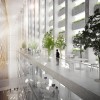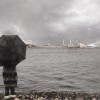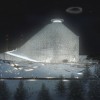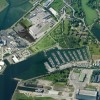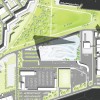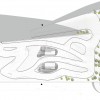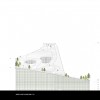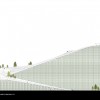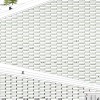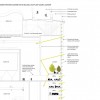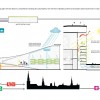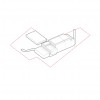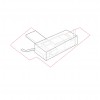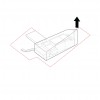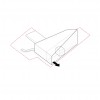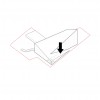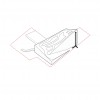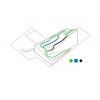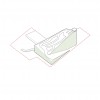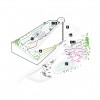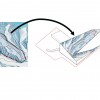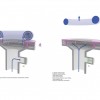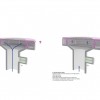BIG's Amager Waste-to-Energy Plant not only exemplifies the cleanest waste-to-energy treatment possible, it offers a ski slope to Copenhagen's residents.
A building down which you can ski and where garbage is burned: some surrealistic fun is coming to Copenhagen. Such a building is the result of the winning competition entry from Bjarke Ingels Group (BIG) with realities:united and Topotek / Man Made Land. Expected to be completed in 2016, the $650 million (USD) Amager Waste-to-Energy facility (Amagerforbrænding) in Copenhagen really does incorporate a ski slope into the design, among its other captivating qualities. Amagerforbrænding combines the waste incineration and pollution control plant, offices, visitor center, and the alpine ski slope in one shell.
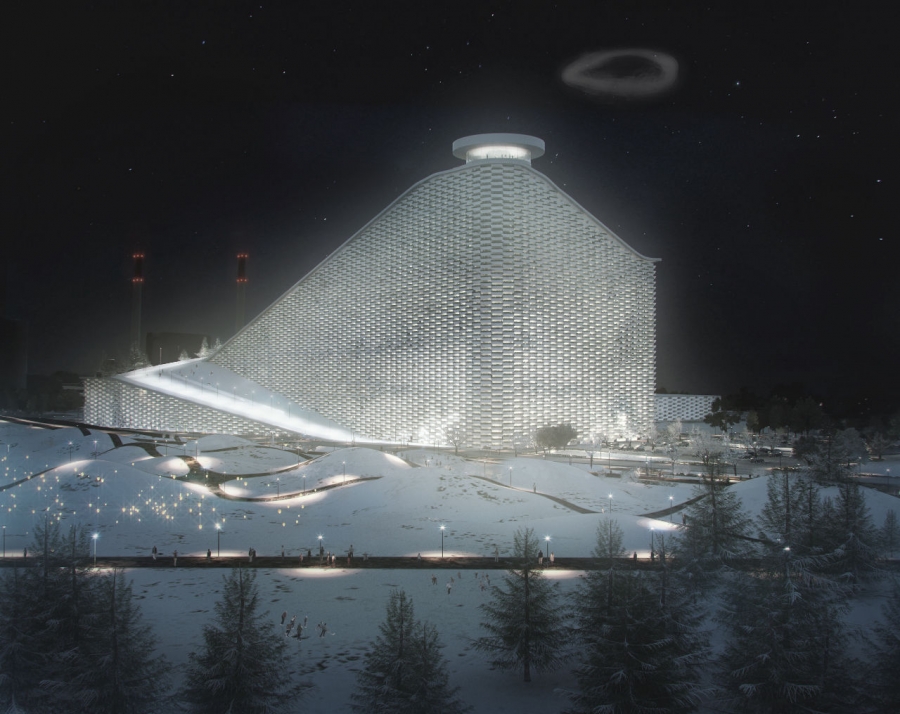
New Danish Architecture
This building is emblematic of BIG’s work and represents a new vein in Danish Architecture, as BIG are not so rooted in the Scandinavian tradition. BIG frequently win competitions, and they are internationally, not regionally, focused. Perhaps BIG’s popularity can be attributed to the fact that they are not shy about saying architecture can be clever, fun, and cool.
Stinky Garbage as a Clean Technology?
BIG start out describing their project for Amagerforbrænding by joking, “There is something rotten in the state of Denmark,” which makes light of the fact that waste incineration is increasingly important in Denmark. However, the Amager waste-to-energy plant is serious business: the plant will supply electricity for 550,000 homes and heating for 140,000 homes through a district heating system every year. The fuel required for this energy output is 400,000 tons of Copenhagen's garbage.
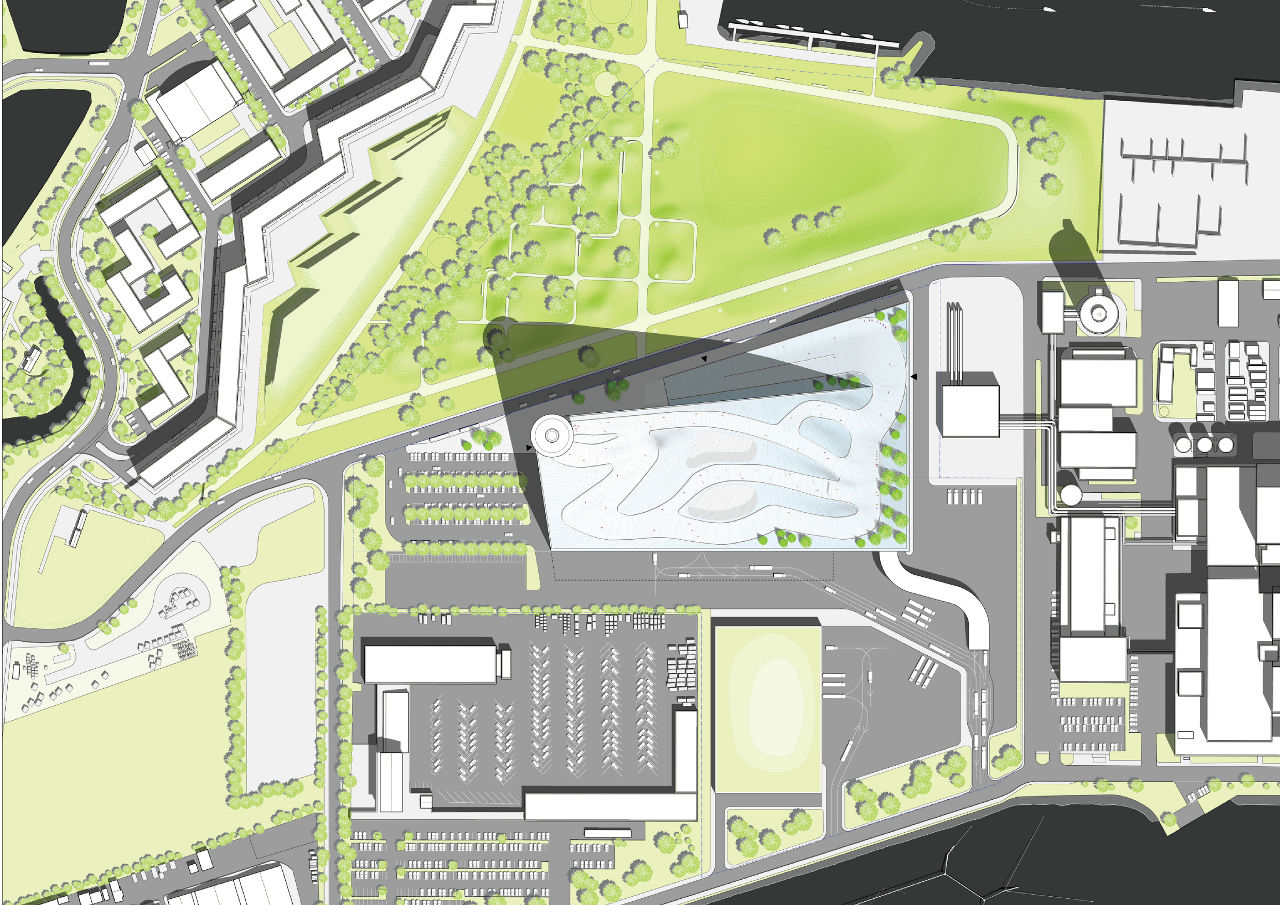
Denmark is quite proud of how our garbage is handled, calling it an environmentally friendly option. Those puzzled readers from the United States or United Kingdom might very well have some vague memories of such incinerators being places of protest, with environmental groups calling them health hazards and worse. However, studies have concluded that with new filtration systems, including those for dioxins, waste incineration is now less harmful than landfilling. The waste system here in Denmark is all publicly operated and prioritizes reduction first, then recycling, then incineration, and finally landfilling only to handle the remainder. Of municipal waste, 66% is recycled, 26% is incinerated, and 8% is landfilled.
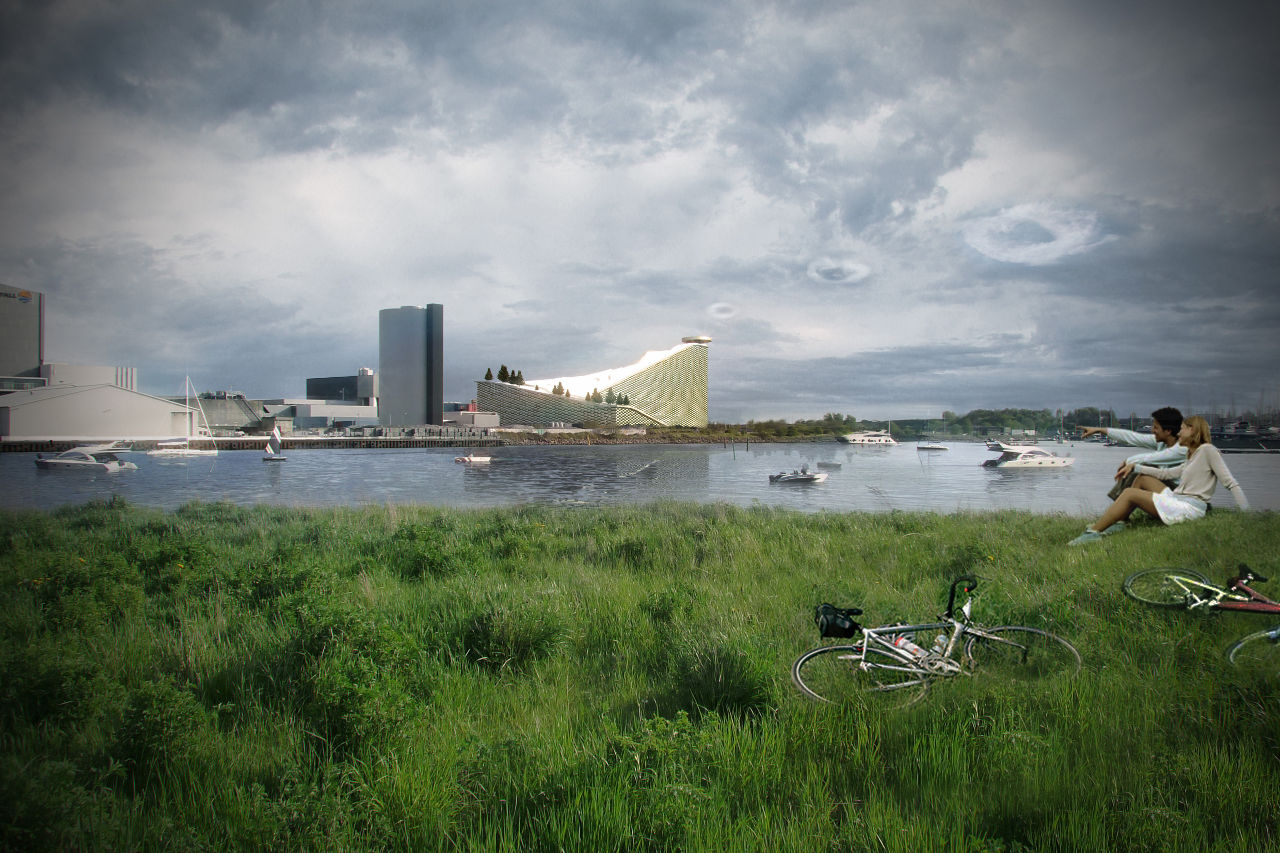
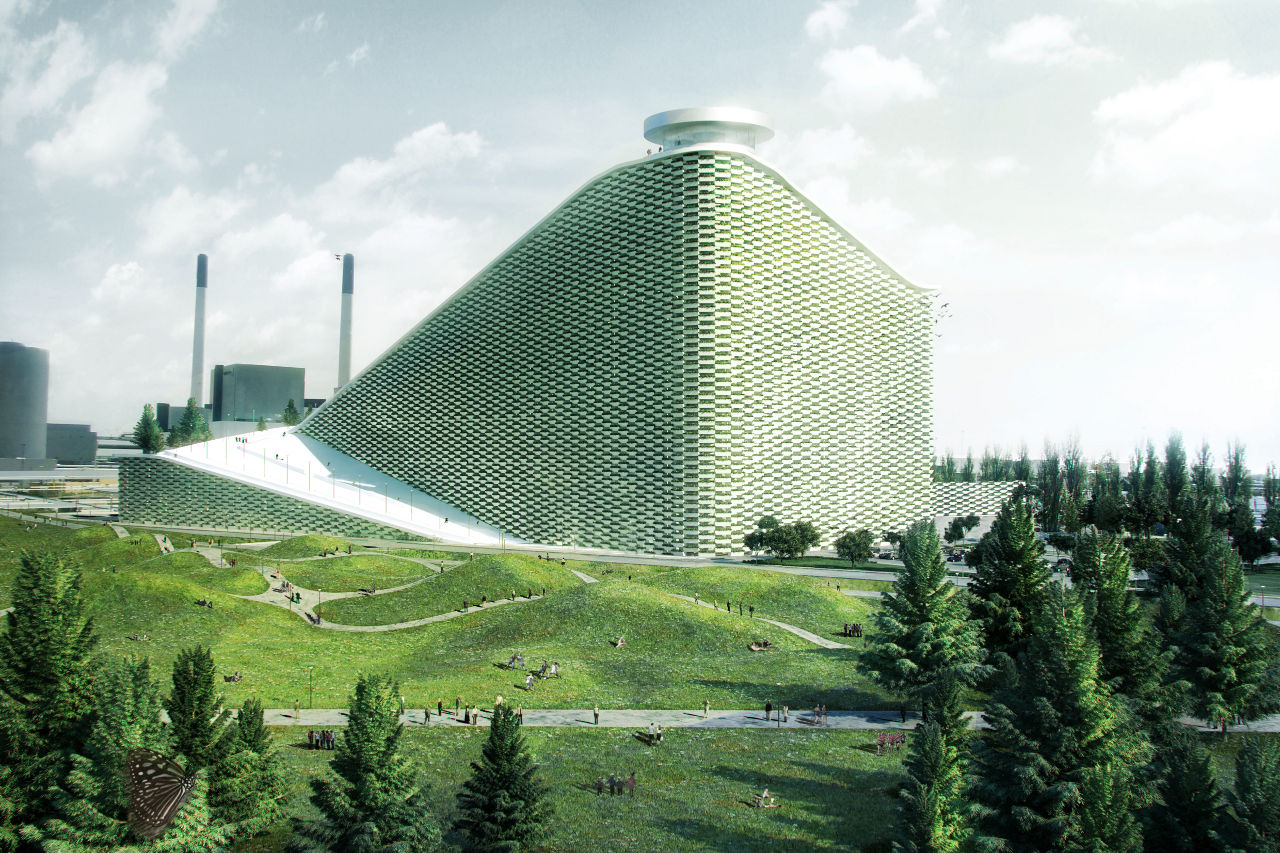
Waste-to-energy facilities still have an image problem; recent efforts at improving this image include incorporating interesting art and architecture. BIG Partner in Charge David Zahle comments, “Many of these facilities now end up with some beautiful gift wrap, but they are missing the gift. We wanted to also give the actual gift.”
Hedonistic Sustainability
Sustainability is predictably a major theme in the design for the Amagerforbrænding. BIG describes their philosophy as “Hedonistic Sustainability,” because living sustainably should be positive and pleasurable. They criticize sustainability rhetoric that is penal or guilt-producing. In that way, Amagerforbrænding is proposed to have a “smoke ring generator” that will release an actual smoke ring every time the building produces one ton of carbon dioxide. A bystander can then visualize how often one ton of carbon dioxide is created in a straightforward way.
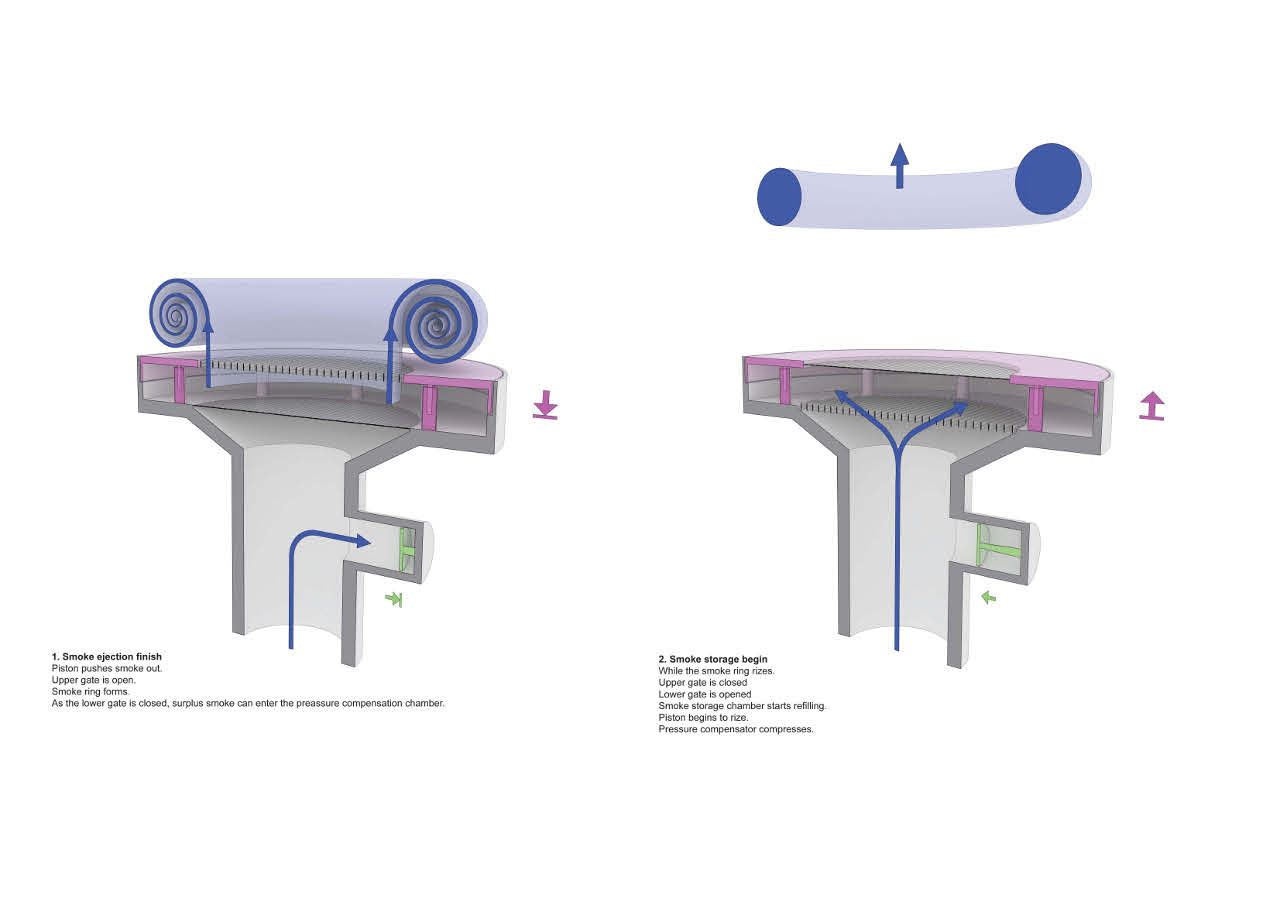
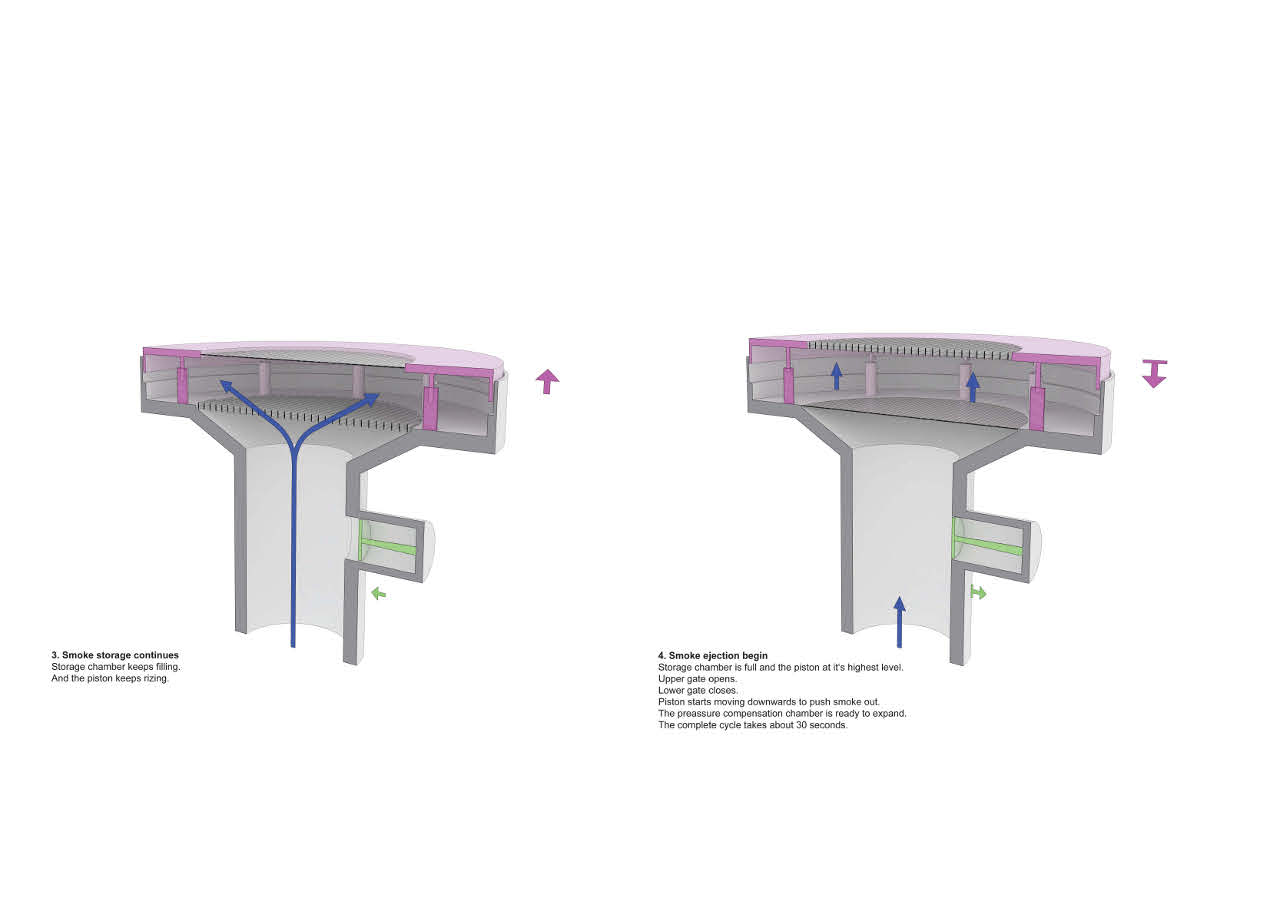
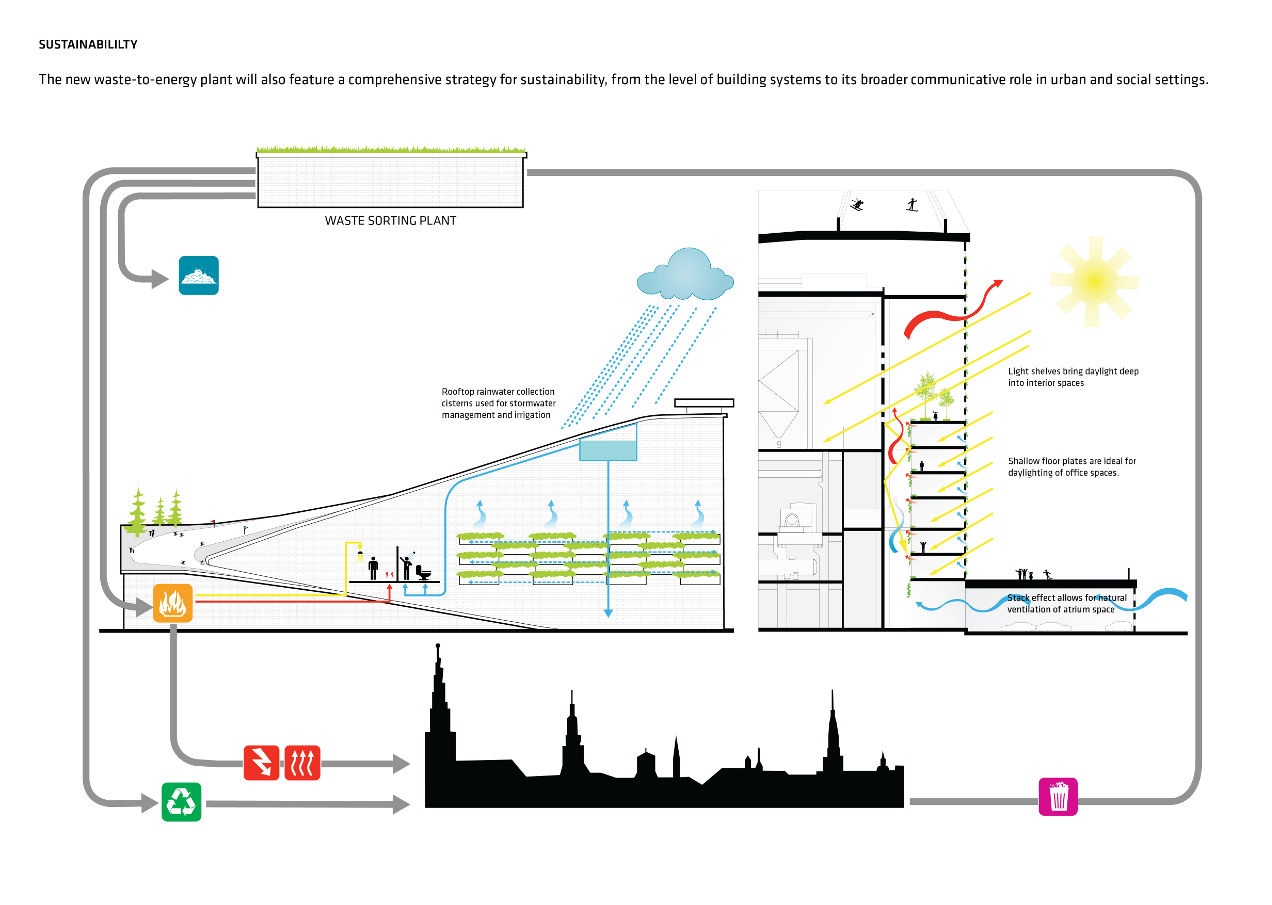
Other sustainable features include a green facade and rainwater collection. The building's facade is composed of large planter boxes that help to manage storm water, improve air quality, and provide habitats. These planters remain consistent while the alternating sections between them might be open, glazed, or concrete, depending on the function behind them. The huge rooftop will also collect rainwater for use in toilets and showers inside or to irrigate the planters outside.
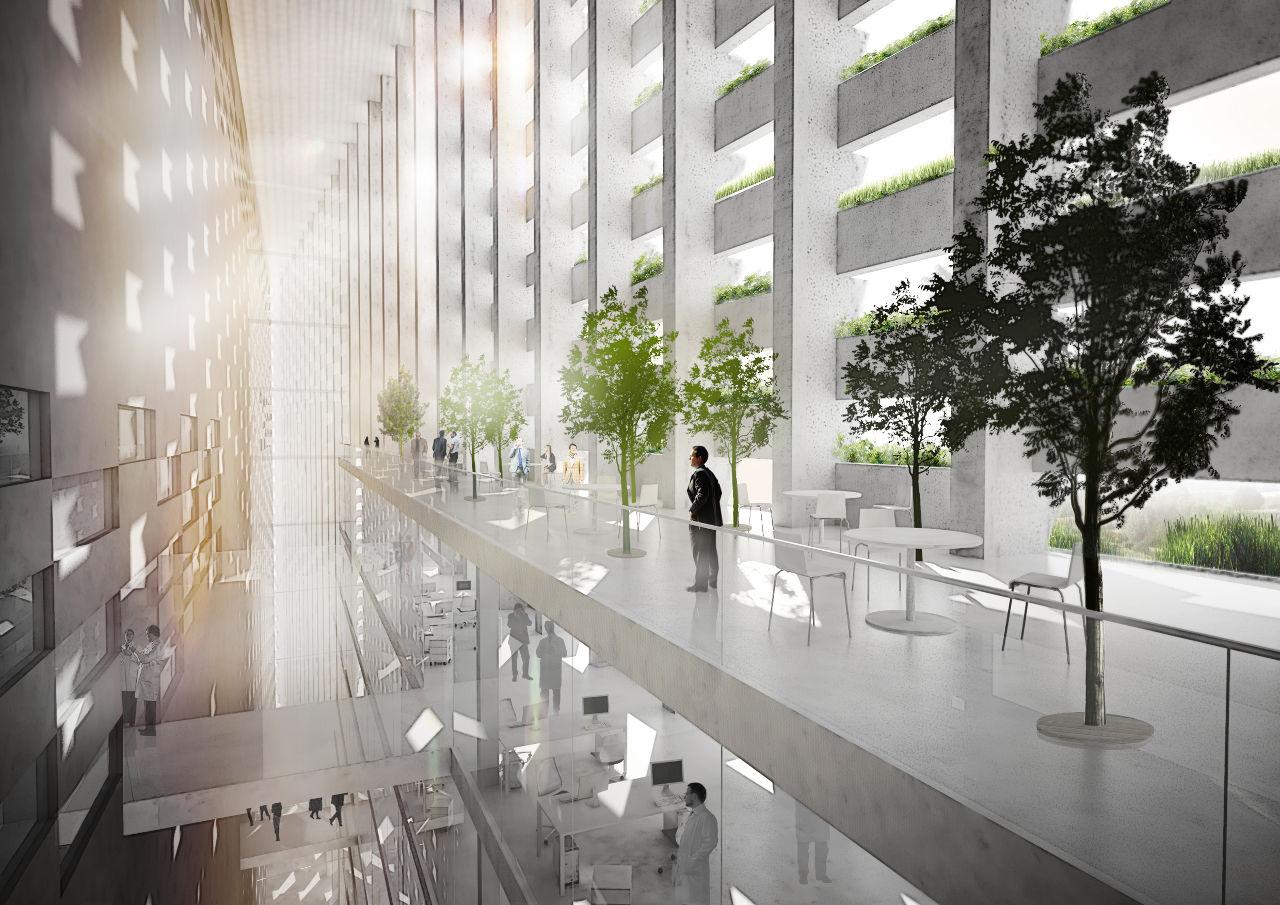
The building represents a youthful and fresh approach to the “triple bottom line,” with economic, social, and environmental sustainability considered as serious fun all the same.
Skiing on the Roof
BIG has often incorporated the roof as a dynamic, usable place in their buildings, and this is one of their most ambitious. The idea of incorporating the 100 m (approx. 328') high smoke stack into the building form mainly led to the design for the ski slope. According to Zahle, the entire roof slope was designed after criteria for what makes a good alpine ski slope, so the design team literally studied alpine ski slopes, and the slope has received some positive feedback from the professional skiers who have reviewed it. The roof features different runs for skiers of different abilities and can be skied on all year because the surface is artificial material.
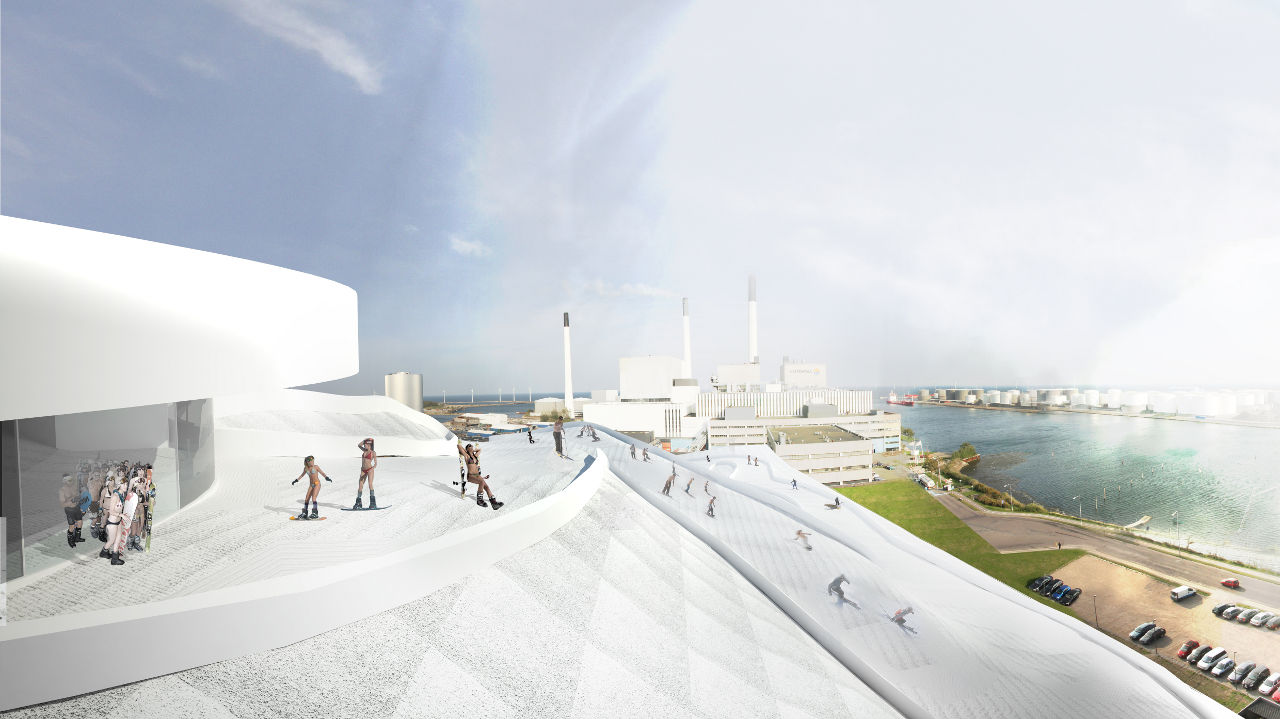
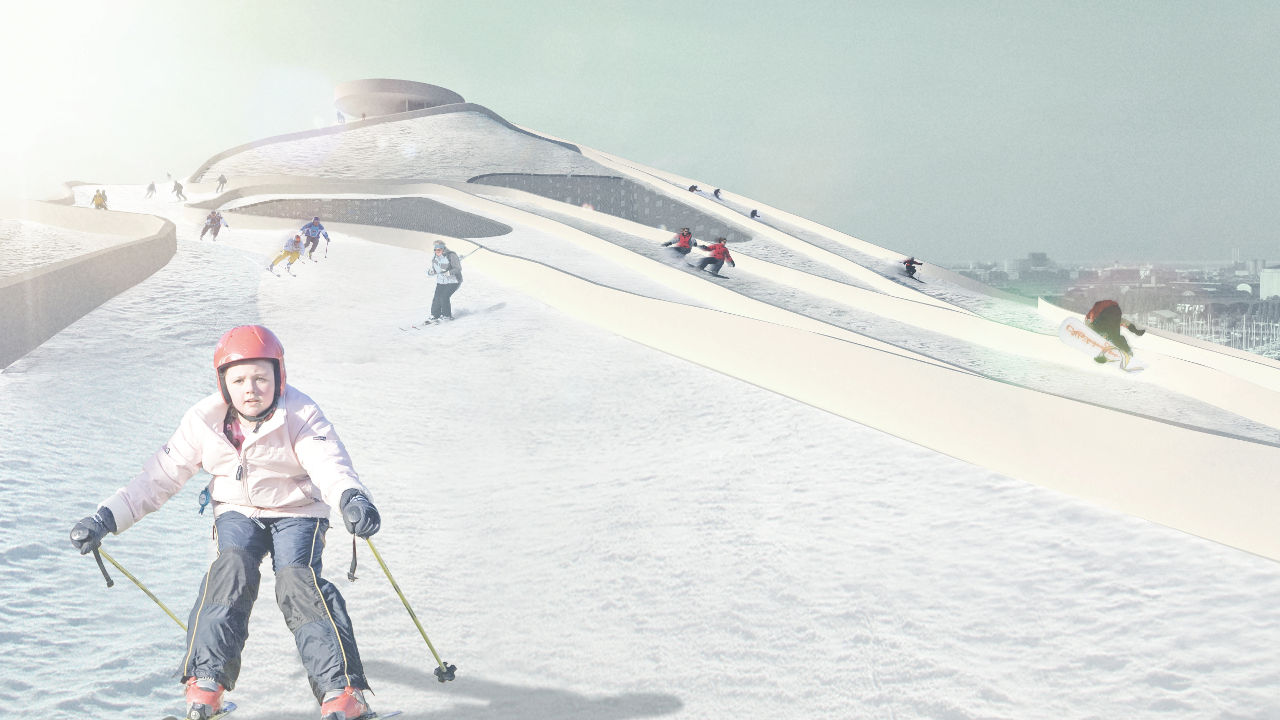
The mountain theme in Copenhagen is quite ironic because it is very flat here, which is good for bicycling but not so good for downhill skiing. Citizens normally drive quite far for any kind of skiing experience. The site is expected to become a major attraction not only for garbage but for both residents and tourists, generating 4–6 million kroner (about $1 million USD) per year in revenue. In addition to the 100 m downhill run, some softer hills and opportunities for crosscountry skiing were incorporated as part of the landscape.
A ski slope in this part of Copenhagen is strangely contextual. The site is located in an area between residential and industrial, creating a unique situation where some interesting recreational activities such as sailing, go-carts, and cable wakeboard already take place.

Greg Vendena
Greg Vendena, LEED AP is a writer, consultant, and architect based in Copenhagen, Denmark, with a background in design, construction, green building, and energy efficiency. His experience includes not only architectural design, but mixing concrete, building custom LED lighting, and energy auditing. He holds degrees in Architecture from Cranbrook Academy of Art and Arizona State University, and a Fine Art degree from California College of the Arts. His work and work together with others has been featured in the Cooper Hewitt National Design museum, and has been published and exhibited extensively. However, playing with his son and riding a bicycle around Copenhagen are what he enjoys the most.

